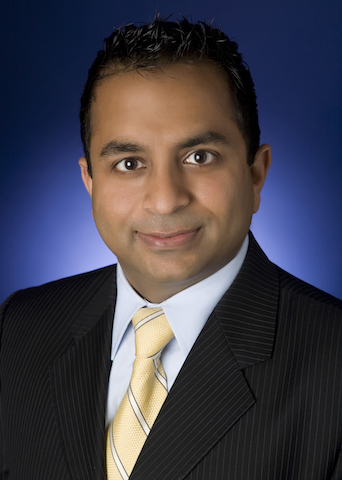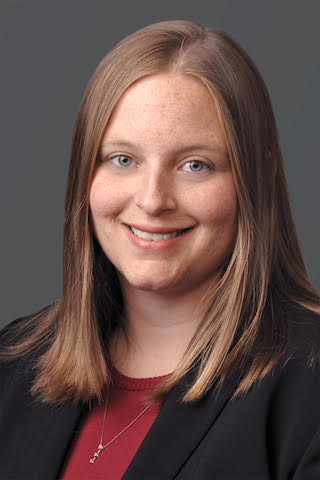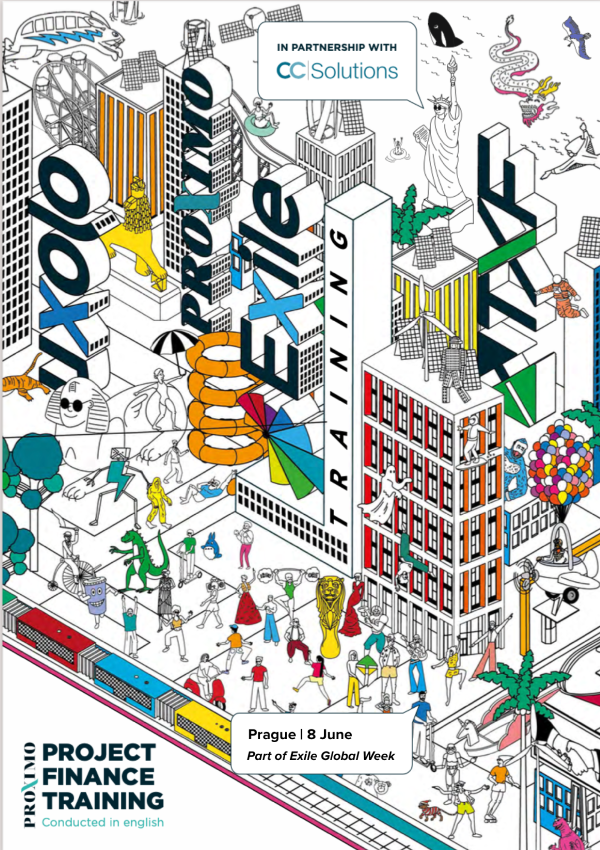Risk, reward and the rebound in US infrastructure finance
Conditions are starting to look promising for higher volumes across US project finance. In a roundtable sponsored by BNY Mellon, Proximo explores the new market dynamic with a selection of experts in US infrastructure financing.

Never have US project finance market conditions been so promising while the market backdrop was so unpromising. Bank market terms are still generous, and non-bank lenders were not scared off by COVID-19 and its impacts. But climate change has some serious impacts on the power sector, with the black-outs in ERCOT joining wildfires in California and volatility in PJM as potential sources of market concern. Volumes in US P3 have been fairly tepid, and US offshore wind is still a long way from delivering. For lenders looking south into Latin America, political instability joins a persistent toll from COVID.
Still, the US recovery from its short, sharp COVID depression is in full swing; the US labour market is tightening and climate change is now capturing the attention of more and more policymakers. The US infrastructure bill is plodding forward at the pace of Los Angeles rush-hour traffic, but still moving forward.
But which corners of the infrastructure finance market are best placed to respond to the challenges of the energy transition and the opportunities from sustained attention to infrastructure investment? Which lenders will have the right risk-reward expectations to exploit these potential shifts?
Joining Proximo to discuss some of the opportunities and challenges of the new normal is a panel comprising a strong cross-section of the US infrastructure finance market.
Participants

Miguel Barrios, principal, business development, BNY Mellon

Nicolai Dillow, managing director and head of origination Americas, Nord/LB

Claus Hertel, managing director, Rabobank

Thomas Liu, managing director, BofA Securities

Cathleen McLaughlin, partner, Paul Hastings

Vinod Mukani, managing director and head of infrastructure & power finance, Nomura Securities

Stephanie Wagner, partner, Mayer Brown

James Wright, head of US project finance & infrastructure, CIBC Capital Markets
Proximo: What challenges have you experienced in collaborating and working together in in this environment. Are you already starting to see things come back?
Stephanie Wagner, Mayer Brown (SW): It was difficult in 2020 to ascertain what it would be like to work with clients and colleagues and how to keep deals moving. But people adapted very quickly by using new technologies to meet and continue to do business. One of the key issues with public infrastructure in the US is the requirements around public meetings. Governments reacted quickly by allowing for virtual meetings and that gave people an opportunity to keep transactions moving. Public agencies also adopted new policies and procedures to accommodate the new virtual realities of deal-making. For instance, we saw public agencies shift from requiring multiple hard-copy submissions to going all-electronic and using tools such as electronic signatures. Several major infrastructure projects managed to stay on time throughout the pandemic and continue into 2021. More recently, we are starting to see a trend towards more in office, in-person activities, and people are excited about that, but I think we'll see a hybrid style of work emerge. Some of the social aspects of new virtual technologies have been unexpectedly positive. For example, when you're working on a deal with clients or counterparties in different regions or countries, you might not meet everyone until near close or even at all, whereas now you have the opportunity for a personal video interaction early on.
Proximo: There’s a theory that 2020 moved smoothly because people were working on deals that they already had in play but that this year made it harder to get out and meet clients and get mandates. Have we seen any evidence of that?
James Wright, CIBC (JW): I think it depends on where you are in your career. If you’ve been around a while, have well-established networks, know your clients and know your counterparts at other banks and institutions, the business development work has carried on fairly seamlessly. It might be less interesting but everyone has done a pretty good job of hopping on Teams with clients and talking about new deals and new ideas. It’s definitely more challenging for the those younger or newer in their careers, who are starting off and haven't got a ready-built network. And its much easier building that with face-to-face interaction, attending conferences and client meetings with lots of people around a table.
Nicolai Dillow, Nord/LB (ND): One thing that has proven to be a little bit more challenging has been onboarding of new staff, whether they're experienced or junior. I think it is more challenging bringing on new people in this environment. We've made an effort to try and get people back to the office because we do have a number of new faces. Technology has done a remarkable job, better than I think most would have expected, but there's real value in being able to go back out and see people face to face.
Proximo: Tom, did you find that the municipal market barely skipped a beat in terms of in terms of distribution and getting investors lined up?
Thomas Liu, BofA (TL): Generally, the municipal market has a large mix of investors including the largest mutual funds, insurance companies and corporations as buyers, but also retail and a middle market buyers – so a very diverse base. A spike in rates back in the March-April 2020 time frame changed the investor mix. But now, we have professional retail investors and other institutional buyers with solid interest in municipal bonds. Another reason the business has done well in 2021 compared to 2020 is that issuers continue to issue debt and benefit from lower rates – with recent rates at or near historical lows in the market.
Proximo: Has everything come back stronger – are we still awash in liquidity?
Claus Hertel, Rabobank (CH): Markets are very liquid across the board, including the project finance markets, the bank market, debt funds, term loan Bs, and liquidity premiums as well have come down across the board. You have new entrants, as well as players that, say, had been doing M&A driven financings for PJM thermal assets and are now looking to redeploy their capital into ESG assets. Pricing is coming down and it’s great for sponsors. Banks however have to be careful with what transactions they are willing to lower hurdles or loosen their structures, or whether they say no.
Vinod Mukani, Nomura (VM): At the start of Covid, there was that question, about how correlated infrastructure debt was to liquid public securities or leveraged loan indices when they were down in 80s and equities were trading so poorly. But Covid has again proven the resiliency of this particular asset class, and there's walls of liquidity now chasing infrastructure because of the lack of correlation to the S&P 500, inflation and GDP, as well as lower volatility, correlation to inflation, and correlation to GDP. It certainly benefits developers, though it creates a challenge for one set of investors.
Proximo: Is it that much harder to find under-utilized, maybe under-examined pockets of liquidity, in the market in current conditions?
VM: In the first quarter of 2020, March to June, there was a question mark, but now it's not much harder than what it was before to find liquidity. It’s not just banks, but credit funds, leasing companies, and any big asset manager or big AUM firm that you look at is busy creating debt funds to support this particular asset class.
ND: It’s all about risk return and the challenge has become making sure the expectations of an investor match the market reality. Pricing is at rock bottom, and non-traditional investors with a huge ESG mandate or an interest in renewables often think twice after they look at where senior debt is trading. Many of the credit funds that have emerged will have more of a mezzanine-like risk return thesis, and clients right now are getting extremely good terms from senior debt providers. When do banks start pricing risk more appropriately? There is a sliver of hope because there's so much deal flow out there from the backlog of projects that people are starting to be more selective in terms of what opportunities they're looking at.
Proximo: Do different debt products – bank debt and bonds in particular – still need to converge or work together better?
Cathleen McLaughlin, Paul Hastings (CM): There is a bit of a convergence of understanding. You used to see bankers from the loan product side trying to do a capital markets deal, but over time capital markets bankers and loan bankers have started to marry the products. Building capital markets features into loan structures is still difficult to achieve and a little clunky, even for a determined sponsor. It will probably remain that way, given the difference in the markets between loan and debt capital markets.
Miguel Barrios, BNY Mellon (MB): We’ve seen transactions evolve like that while they were being put together, starting out as club loans before becoming note purchase agreements just before closing, or they even became notes under note purchase agreements that then got put into the clearing systems for trading. We’ve seen institutional investors push for that note purchase agreement rather than a loan participation agreement, but adapting a loan into a note does not always work that quickly and easily, even if the decision is made very quickly. Some of the structures we haven't seen since the late 2000s came back to market, such as periodic draws on bonds (e.g. variable funding notes) during construction rather than a bridge loan.
Proximo: We’ve observed private placements getting larger and more mainstream. Is that a phenomenon you’ve observed?
CM: We are seeing that in spades. We're seeing it in all sorts of different stages of projects and the sizes are getting bigger. Maybe 15-20 years ago you saw private placements when the more liquid capital markets weren't available or something was just too small – under $100 million- for the Rule 144A debt capital markets. Now project private placements are much larger and more complex and the investors are a broad array of funds and insurance companies that are now entering infrastructure and renewables. These placements have project-like financial engineering or legal engineering, and they use the NAIC model form.
JW: For US renewables portfolios, the private placement market has been very relevant and a good source of liquidity to tap. At the individual asset level, banks have still been able to price tighter than the institutional market and there are structural issues such as make-whole premiums and the complexities around tax equity which can inform refinancing decisions.
VM: Certainly bonds or private placements have a purpose for a stabilized asset. But if capital is being formed around greenfield assets, just the negative carry is difficult to solve. Bank debt is more conducive to that capital formation, which has ebbs and flows, which has construction delays, and which may have other dynamics that play out. The price points are different and the duration is different too.
Proximo: Delayed draw ability can start costing sponsors a lot. What new sources of capital are on offer in the muni market in general?
TL: Our market is very mature so we really don't see a lot of changes in that sense. However, we are seeing more direct placements than before and this may be a function of banks and broker-dealers becoming more sophisticated in terms of risk tolerance and market understanding. So if there are concerns with the traditional capital market and/or investors, we can look at the bank market to place that debt. Overall, most corners of the municipal sector are pretty secure, given that it’s backed by the full faith and credit of a municipality and/or a dedicated revenue source.
SW: You see some opportunities to combine different sources of capital in public-private partnerships with private activity bonds or the federal TIFIA programme. These credits are investment grade, if not as highly-rated as traditional muni credits. Over the last 10-15 years you’ve had the emergence of a stacked debt structure with private activity bonds issued to the municipal tax-exempt market, coupled with a TIFIA loan from the federal government, and maybe even with a short-term bank loan layered in to deal with potential negative arbitrage on greenfield projects.
Proximo: Let’s talk about Libor. What's your feeling about where we are in the Libor transition?
MB: We’re all getting ready for something and we still don't know exactly what that something is. It’s not just an issue for the loan market, but it’s also an issue with variable rate bonds. As a servicer it’s been a huge process, and we’re setting up our systems to deal with the replacement rates in the different markets. We’ve been able to on-board a lot of new transactions that have different language, that have different replacement rates or potential replacement rates in them. But there doesn't seem to be a consensus about what happens the day that Libor really goes away. We will need to sit down as an industry and work out what the consensus is.
CM: Law firms are being hired by banks to review the documentation they have and to come up with standard language on transition. Every bank has got a form that tries to incorporate flexibility to deal with it, which is the going forward issue, but there’s also the look backward issue – dealing with the documents they already have. There is also a challenge on the ISDA side because many transactions have ancillary derivatives that are related to the interest determination. But while it's a massive issue, banks and institutions are on top of it in the same way they were on Y2K, and as they had to during the financial crisis.
Proximo: Do we think banks will have access to the engineering and technical know-how to finance the technologies that will be crucial to the energy transition?
JW: Project finance has not always been an easy financing technique to marry with new technologies. Lenders typically need to see an operating history to get to the rsk rating and associated cost of capital we typically see in the investment grade space. Where there can be a bridge for an energy transition thematic, is where there’s a clear evolution of technology rather than a revolution. For instance, carbon capture and storage has an obvious historical application in the enhanced oil recovery business and the technology has been around for decades in terms of the basic compression and dehydration equipment. We can foresee a lot of CO2 pipelines being built with these CCS assets in mind, though those will also present some interesting permitting discussions for lenders. For batteries, on the other hand, the challenges now are more about the usage case – both in front of and behind the meter – and the fact that some of those cases can present quite a lot of merchant power risk to a project lender. On the technology side though, Lithium ion technology has been around since the 80s but it hasn’t yet been deployed at grid scale over an extended period of time. So that puts a focus on performance guarantees, warranty and O&M packages. For offshore wind, we in the US should be leveraging Europe’s 25-year history in the space. Its not all that new but there will be some interesting credit analysis around the staggering new turbines of 12 to 15MW+ in size that we’ll eventually be seeing down the East Coast. That's far bigger than deployments to date, but again maybe construed as a technical evolution not a revolution. Lastly when we consider renewable natural gas, biofuels and landfill gas, these can all be very sensitive to environmental change, so we’ll have to consider the potential impact of extreme weather events on those emerging business opportunities.
CH: I think batteries are now considered relatively proven by project lenders. Distributed solar and distributed batteries will face different challenges, because they’re not really classic project finance structures. Distributed solar comprises 1-2MW facilities that are aggregated and warehoused for a few years and then refinanced in the capital markets. However, you have to get comfortable around the state programmes in New York, California, Massachusetts, Illinois, New Jersey. You need to put in the work on documentation and monitoring, and each institution needs clear credit guidelines.
VM: The understanding of technology, whether it's evolutionary or revolutionary, is critical, but as recently as 2008 we were trying to get our arms around solar as a technology. In the end it's about risk allocation and risk appetite – different pools of capital need to lean in to allocate and underwrite that risk and certainly PF banks may not be looking to underwrite certain technology risk. Other types of capital might, say, be more willing to take risk on fuel cells or hydrogen – it might not be time for project finance lenders yet.
ND: In 12 months the battery storage market went from a lot of talk but maybe a couple of banks and a couple of projects to almost every new greenfield deals having a battery or storage component to it. So don't underestimate the readiness of the market – even the project finance market – to adapt and digest some of these new technological challenges.
Proximo: Do we think that ESG processes have evolved from primarily being a screen for bad or doubtful projects to being a positive mandate to get more capital out of the door for the right projects?
TL: The green bond market has really taken off based upon the Green Bond Principles and, in the water/wastewater sector, with most investors agreeing that water financings are in fact green. I think over the last five years or so about a third of all the green bond deals done in the US municipal market are in the water and wastewater area. I also believe that the social aspect of improvements to water infrastructure mean that it will be a good candidate for sustainability bonds. Green bonds have helped cities and states promote their commitment to ESG, and have allowed us as bankers to reach investors that, absent green labelling, might not have participated in the muni market as well as to assist us in achieving a pricing benefit for our clients.
CM: The enhanced focus on ESG is filtering through to companies, which are now putting their own ESG programmes in place. Bankers have suggested to issuers that there will be pricing benefits, but companies are not just dressing up something that was already eligible to get better pricing. It's forcing different behaviours at the company level.
Proximo: Is this evolved ESG approach filtering through to governments in terms of how planning or they procure assets? Do they appreciate some of those processes that are now at work among lenders?
SW: Municipal markets have done green bonds for certain PPPs or energy projects. At times there is clear overlap between ESG priorities and governmental goals and where these are aligned, there may be natural synergies that would allow for green bonds or similar to be used on P3 or other government projects.
Proximo: What sectors and assets do you think will be particularly interesting going forward, or deliver particularly good volumes?
CH: Distributed solar and anything distributed generation will have a large growth profile, and we'll see a lot more activity in the battery side. Every generation project we see has batteries attached to it and we also see it on a standalone, utility-scale basis, whether in ERCOT, CAISO, New York, or Massachusetts. We’ll also see more storage activity in markets that have challenges in absorbing intermittent power, for instance and where batteries are needed for grid stability, especially during certain times of the day.
TL: Looking at engineering and infrastructure reports, you'll see over a trillion dollars in future water infrastructure needs. While there may be a reluctance to fund water in certain cases, we generally see growing needs ranging from replacing and upgrading water pipes to flooding and drought to lead remediation. I think we're now seeing more openness and a general desire to fund these projects. General infrastructure including housing, public power, roads and bridges also have large funding needs and are getting broader attention. So pretty much most areas within the public finance sector will have large needs and may see more funding due to a general desire to fund projects in the current low interest rate environment.
Proximo: Does the health of the P3 market in the US necessarily depend on public finances being in a poor state?
TL: I think it’s hard to generalize. In some cases, the municipalities are moving toward P3 transactions as the most attractive financing option to provide funding given the economic and other challenges they may be facing and may not be dependent upon their financial situation or condition.
SW: I don't think it requires a replacement of the municipal market itself for funding public infrastructure. The use of P3 could be driven by a lack of direct access to capital for the public agency, because of debt limits or other funding restrictions. A P3 also could offer the public agency lifecycle benefits to a project and while these benefits may not be reflected in the upfront cost of capital, a public agency might prioritize lifecycle benefits over time. As Tom Liu said, some assets have reached the end of their useful lives earlier than they should have because of deferred maintenance or other issues with public sector funding. I think it will be interesting to see what comes out of any infrastructure legislation and whether it will offer additional dollars or additional incentives for alternative financing or structuring of public projects.
Proximo: What are the main challenges and opportunities in energy and infrastructure finance in the next 18 months that we haven’t covered?
CM: We have an unknown response after this pandemic in terms of how people live, and what structural issues will need to be addressed. In the health care sector – especially in the markets where I operate like in Latin America – there's a chronic under-hospitalization and frequently that is an infrastructure product. Those countries are some of the worst hit by COVID and continue to be the worst hit.
JW: I still think offshore wind is going to potentially be very significant here in the US. The Biden administration has committed to 30GW by 2030 and we're at less than 40MW right now on the East Coast. Your average wind farm today can be three or four billion dollars apiece, so there's going to be a lot of capital going into the offshore space in the next five to 10 years. When we think about the energy transition, policy and regulations are the bedrock of investor confidence, so we've got to see where the Biden infra plan shakes out at the working level. Investors need clarity and certainty. They need visibility on where those policies are going over the next five or 10 years across multiple administrations. We also all need to be cognizant of the speed of change we're seeing in this space. Banks are not always the most nimble institutions and I think it's incumbent on all of us to start moving a little quicker to keep up with the pace!
VM: ESG is an endeavour that affects the entire globe, but how to support the energy transition is going to be a real challenge. How do you support assets that do not completely conform to what's required of ESG, not just the E, but also the S and G? Another challenge and opportunity will be digitization. Covid has made it possible for us to work remotely, creating opportunities in data centres, fiber, broadband, and cell towers. I think there will also be some opportunities from public sector or public services being offered to private owners, for instance in district heating.
TL: We're excited about the Federal Infrastructure Bill and other related funding proposals coming out of Washington DC. These proposals include large dollars but that's still fairly small relative to the general infrastructure needs of the business. So there's obviously still going to be large needs for capital market funding as well as innovative financings.
MB: There are a lot of ESG bonds out there, but no standard tracking or uniformity. BNY Mellon has had extensive experience working with ESG bond issuers and we’re noticing that the pain points are consistent across the industry. We stay close to our clients and other market participants to see how the ESG market is evolving on that front.
SW: I see both a challenge and an opportunity in the integration of new or even potentially disruptive technologies into public infrastructure. This presents interesting questions, like how to plan and finance an airport with parking over a 30-year development as technology continues to move towards autonomous vehicles. There's really great opportunity as these technologies develop, but it likely requires some rethinking of traditional ways of looking at project development.
ND: Maybe the biggest opportunity and challenge, is dealing with this wall of capital and making sure that those different pockets of capital have an understanding of what's possible – to optimise the resources and supply that are out there.
CH: In addition to the capital needs of offshore wind projects over the next two to three years, there are the needs of the infrastructure around it – transmission, ports, and vessels. As a challenge, I see terms being discussed with very thin pricing, long tenors, which don't really work for this market. There will be challenges around maintaining credit discipline and structure discipline. Tax equity will also be a challenge, maybe not for the very large sponsors but for some of the smaller ones. There might be the availability, but after the ERCOT blackouts the deal process has slowed down and some tax equity providers have exited the market.
Request your PDF copy of the roundtable today.
Simply fill out your details below and a member of the team will contact you with the PDF:






